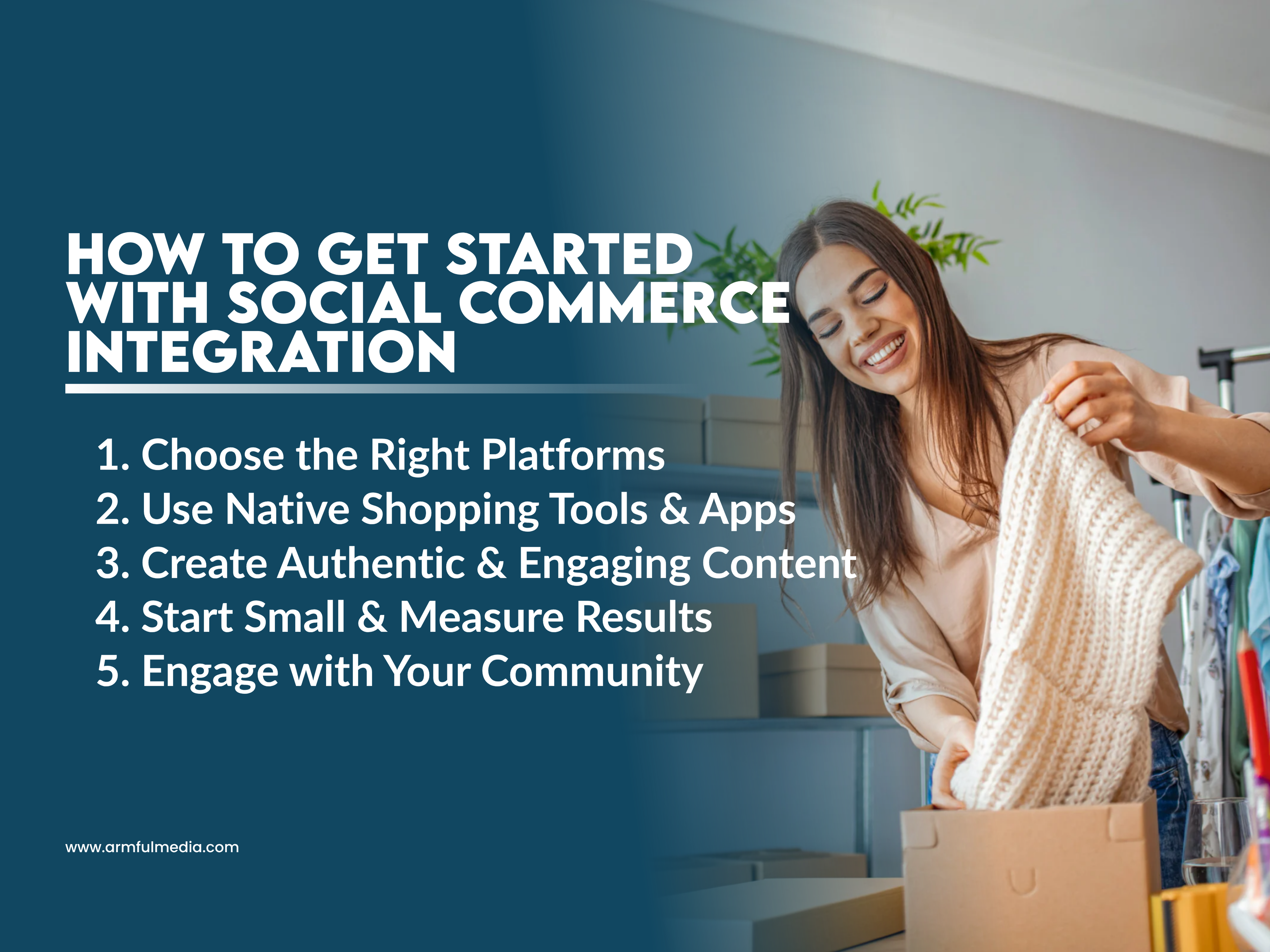Social media isn’t just for catching up with friends or sharing memes anymore—it’s become a powerful shopping destination. With billions of users scrolling daily, social commerce is reshaping how people discover, interact with, and buy products online. Integrating social commerce directly into your e-commerce strategy isn’t just smart—it’s essential to stay ahead in today’s fast-paced digital marketplace.
What is Social Commerce?
Social commerce is the blend of social media and online shopping, where users can discover and buy products without ever leaving their favorite platforms like Instagram, Facebook, or TikTok. This means the entire shopping experience—from product discovery to checkout—happens seamlessly within the social app. It transforms social networks into virtual marketplaces, making shopping more interactive, social, and immediate than ever before.
What is Social Commerce Integration?
Social commerce integration means connecting your e-commerce store with these social platforms to create a seamless shopping experience. Think of it as linking your product catalog, inventory, and checkout process directly to social media channels, allowing customers to browse and purchase with just a tap. This integration simplifies the buyer’s journey and helps brands capture sales at the exact moment interest peaks.
The Rise of Social Commerce in Today’s Market
The numbers don’t lie—social commerce is booming. More shoppers prefer discovering new products through social media feeds than traditional online searches. Consumers love the interactive, personalized experience that social commerce offers.
Features like reviews, live demos, influencer endorsements, and instant checkout all in one place make shopping easier and more engaging. This trend is transforming social media into a vibrant marketplace. Brands can now reach eager audiences directly and organically like never before.
Benefits of Social Commerce Integration for Businesses
Social commerce integration transforms how businesses connect with customers by merging shopping and social interaction seamlessly.

1. Simplifies the Buying Journey
Social commerce integration reduces friction by letting customers browse, buy, and share all within one platform. There’s no need to switch between apps or websites, which makes the process faster and smoother. This convenience keeps shoppers engaged and ready to complete their purchases.
2. Boosts Conversion Rates
By streamlining the purchase experience, brands see higher conversion rates. Shoppers are less likely to abandon their carts when the checkout process is simple and quick. This means more sales and greater revenue for businesses.
3. Provides Valuable Customer Insights
These platforms generate rich data about shopper behavior and preferences. Brands can analyze this information to better understand what drives their audience. These insights help tailor future campaigns and product offerings to meet customer needs.
4. Enhances Customer Engagement
Social commerce opens doors to richer interactions through features like live shopping events and interactive content. These experiences create excitement and keep customers coming back. Working with influencers helps build trust and foster a strong community around their products.
5. Expands Reach & Brand Awareness
Integrating it helps brands tap into the vast audiences on social media platforms. With easy sharing and influencer partnerships, products can reach new potential customers quickly. This organic exposure boosts brand visibility and drives growth without heavy advertising costs.
Challenges to Consider with Social Commerce Integration
Social commerce can help brands grow, but it also brings some challenges. Knowing these challenges helps brands do it the right way.

1. Technical Complexities
Syncing inventory and payment systems across multiple platforms can be tricky. These technical hurdles may cause delays or errors if not handled properly. Brands must invest in reliable technology to ensure smooth integration.
2. Data Privacy & Security
Protecting customer data is more important than ever. Brands need to follow strict privacy regulations and safeguard sensitive information. Maintaining customer trust depends on how well these security measures are implemented.
3. User Experience Design
A seamless and enjoyable shopping experience is crucial for success. Any glitches, confusing layouts, or slow load times can drive potential buyers away. Careful planning and testing are key to creating a smooth journey for users.
4. Strategic Planning
Without a clear strategy, social commerce integration can fall short of its potential. Brands must align their goals with the capabilities of the platforms they use. With the right tools and thoughtful planning, these challenges become manageable.
5. Keeping Up with Constant Changes
These platforms and technologies evolve rapidly, which can make staying up-to-date a challenge. Brands must be agile and ready to adapt their strategies as new features and trends emerge. Continuous learning and flexibility are essential to stay ahead in this fast-moving space.
How to Get Started with Social Commerce Integration
Social commerce lets you sell directly on social media, meeting customers where they are. Integrating your store boosts engagement and drives sales seamlessly.

1. Choose the Right Platforms
Start by identifying where your target audience spends most of their time online. Focus your efforts on those social media platforms to maximize impact. This ensures your social commerce integration reaches the people most likely to engage and buy.
2. Use Native Shopping Tools & Apps
Explore built-in shopping features like Instagram Shops or Facebook Marketplace to make buying easy for customers. Additionally, consider third-party apps that connect your online store directly to social media channels. These tools help streamline the shopping experience and boost sales.
3. Create Authentic & Engaging Content
Develop content that fits naturally with each platform’s style while highlighting and helping you promote your product effectively. Authenticity builds trust and encourages users to interact with your brand. Engaging posts increase visibility and drive more traffic to your shop.
4. Start Small & Measure Results
Begin with a pilot campaign or limited product selection to test what works best. Track key metrics like engagement, clicks, and sales to evaluate success. Use these insights to refine your strategy and grow your social commerce presence effectively.
5. Engage with Your Community
Build relationships by responding to comments, messages, and reviews promptly. Encourage user-generated content and share customer stories to create social proof. Active engagement helps foster loyalty and turns followers into repeat buyers.
Final Thoughts
Social commerce integration is changing how people shop by letting them buy things right on social media. People can find products while scrolling, so shopping feels easy and quick. This makes it natural for brands to connect with their customers in a more direct way.
It helps businesses sell more and reach lots of new people without spending much on ads. Talking with followers and sharing real stories builds trust and keeps customers coming back. Adding social commerce integration to your plan is a smart way to grow and stay ahead.
Want to learn how social commerce integration can boost your sales? Book a discovery call with us today!

The Armful Media Content Team is a group of skilled writers, researchers, and strategists passionate about influencer marketing. We create content that drives real results, engages audiences, and builds trust, helping brands expand their reach and connect with their audience in meaningful ways.








